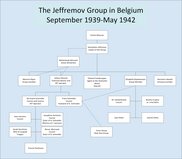
Leopold Zakharovich Trepper was a Polish-Israeli Communist and career Soviet agent of the Red Army Intelligence. With the code name Otto, Trepper had worked with the Red Army since 1930. He was also a resistance fighter and journalist.

The Red Orchestra was the name given by the Abwehr Section III.F to anti-Nazi resistance workers in Germany in August 1941. It primarily referred to a loose network of resistance groups, connected through personal contacts, uniting hundreds of opponents of the Nazi regime. These included groups of friends who held discussions that were centred on Harro Schulze-Boysen, Adam Kuckhoff and Arvid Harnack in Berlin, alongside many others. They printed and distributed prohibited leaflets, posters, and stickers, hoping to incite civil disobedience. They aided Jews and resistance to escape the regime, documented the atrocities of the Nazis, and transmitted military intelligence to the Allies. Contrary to legend, the Red Orchestra was neither directed by Soviet communists nor under a single leadership. It was a network of groups and individuals, often operating independently. To date, about 400 members are known by name.

Heinrich Koenen was a German engineer, anti-fascist resistance fighter and agent of the Soviet military intelligence service GRU, known as a "scout".
Henry Robinson, sometimes known as Henri Robinson, was a Belgian Communist and later intelligence agent of the Communist International (Comintern). Robinson was a leading member of the Red Orchestra, a Soviet espionage group based in Paris. Robinson used a number of code names and aliases.
This is a list of participants, associates and helpers of, and certain infiltrators into, the Red Orchestra as it was known in Germany. Red Orchestra was the name given by the Abwehr to members of the German resistance to Nazism and anti-Nazi resistance movements in Allied or occupied countries during World War II. Many of the people on this list were arrested by the Abwehr or Gestapo. They were tried at the Nazi Imperial War Court before being executed either by hanging or guillotine, unless otherwise indicated. As the SS-Sonderkommando also took action against Soviet espionage networks within Switzerland, people who worked there are also included here.
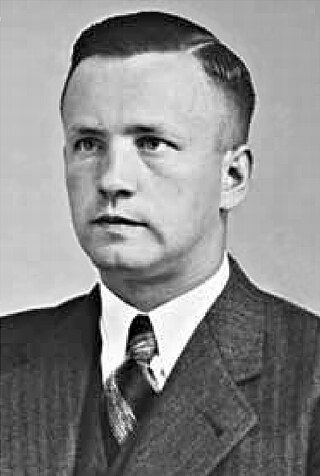
Heinz Michael Pannwitz was a German war criminal, Nazi Gestapo officer and later Schutzstaffel (SS) officer. Pannwitz was most notable for directing the investigation into the assassination of Obergruppenführer Reinhard Heydrich on 27 May 1942 in Prague. In the last two years of the war, Pannwitz ran the Sonderkommando Rote Kapelle, a combined Abwehr and Gestapo counterintelligence operation against the Red Orchestra espionage network, in France and the Low Countries.

Anatoly Markovich Gurevich was a Soviet intelligence officer. He was an officer in the GRU operating as "разведчик-нелегал" in Soviet intelligence parlance. Gurevich was a central figure in the anti-Nazi Red Orchestra in France and Belgium during World War II.
Johann Wenzel was a German Communist, highly professional GRU agent and radio operator of the espionage group that was later called the Red Orchestra by the Abwehr in Belgium and the Netherlands. His aliases were Professor, Charles, Bergmann, Hans, and Hermann. Wenzel was most notable as the person who exposed the Red Orchestra after his transmissions were discovered by the Funkabwehr, later leading to his capture by the Gestapo on 29–30 June 1942.
Sonderkommando Rote Kapelle was a German special commission that was created by German High Command in November 1942, in response to the capture of two leading members of a Soviet espionage group that operated in Europe, that was called the Red Orchestra by the Abwehr. The Sonderkommando Rote Kapelle was an internal counter-intelligence operation run by the Abwehr and the Gestapo. It consisted of a small independent Gestapo unit that was commanded by SS-Obersturmbannführer Friedrich Panzinger and its chief investigator was Gestapo officer Karl Giering. Its remit was to discover and arrest members of the Red Orchestra in Germany, Belgium, France, Netherlands, Switzerland and Italy during World War II.
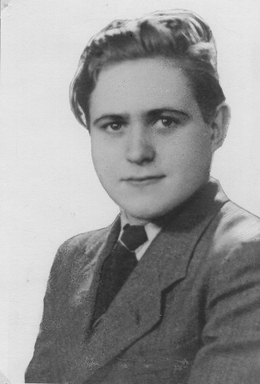
Leon Grossvogel was a Polish-French Jewish businessman, Comintern official, resistance fighter, communist agitator and one of the organizers of a Soviet intelligence network in Belgium and France, that was later called the Red Orchestra by the Abwehr. Grossvogel used the following code names to disguise his identity: Pieper, Grosser, and Andre. In the autumn of 1938, Grossvogel became associated with Leopold Trepper, a Soviet intelligence agent who would later run a large espionage network in Europe. Grossvogel established two cover companies, the Foreign Excellent Raincoat Company and later Simexco that would be used by Trepper as a cover and funding for his espionage network. Grossvogel who organised funding for the companies, would later become an assistant to Trepper, organising safehouses, couriers, cutouts and agents.
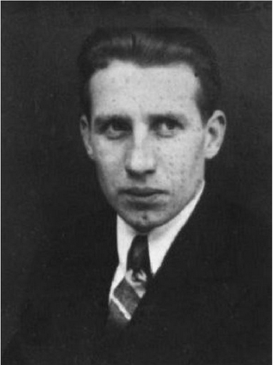
Mikhail Varfolomeevich Makarov was a Russian national and career Soviet GRU officer with rank of lieutenant, who was one of the organizers of a Soviet intelligence network in Belgium and Netherlands, that was later called the Red Orchestra by the Abwehr. His aliases were Alamo, Carlos Alamo and Chemnitz. In March 1939, Makarov became associated with Leopold Trepper, a Soviet intelligence agent who would later run a large espionage network in Europe. Makarov was captured on the 13 December 1941 by the Abwehr and later executed in Plötzensee Prison in 1942.
Karl Giering was SS-Hauptsturmführer and Criminal Councillor in the Geheimes Staatspolizeiamt Berlin (Gestapo) and later Head of Department IV A 2 in the Reichssicherheitshauptamt (RSHA). Giering is regarded as one of the most dangerous persecutors of the communist resistance against the Nazi regime. He commanded the Gestapo to smash the apparatus of the Betriebsberichterstattung (BB) of the Communist Party of Germany (KPD) and conducted investigations against the Soviet espionage network known as the Red Orchestra while part of the Sonderkommando Rote Kapelle.
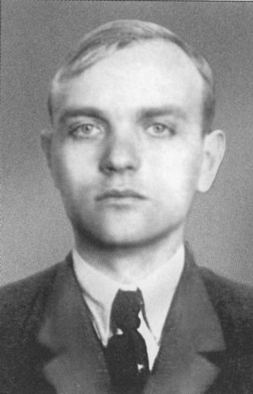
Konstantin Lukitsch Jeffremov, also known as Konstantin Yeffremov, was a Soviet GRU intelligence officer, known as a scout in Soviet intelligence parlance, with the rank of captain. Jeffremov was an expert in chemical warfare. Jeffremov used the aliases Pascal and Eric Jernstroem to disguise his identity in messages He had been working for Soviet intelligence since 1936. and the alias Bordo. Jeffremov has been labeled an anti-Semite, as he expressed resentment towards being subordinate to the Jews who dominated the GRU. He was the organizer of a Soviet espionage network in the Netherlands and the Low Countries In 1942, Jeffremov took over the running of a number of networks in Belgium and the Netherlands, that had been damaged in the months prior, after several members were arrested by the Abwehr. These networks was later given the moniker, the Red Orchestra by the Abwehr. Jeffremov was arrested in July 1942 and agreed to work for the Abwehr in a Funkspiel operation, after being tortured.

Daniël "Daan" Goulooze was a Dutch Jewish construction worker who was a committed communist and resistance fighter. In 1925, he became a member of the Communist Party of the Netherlands (CPN) and by 1930 had become an executive member of the organisation. In 1934, he formed Pegasus, a publisher of many left-wing writers and intellectuals in the Netherlands, some for the first time. In 1935–1936, Goulooze formed the Dutch Information Service (DIS), an organisation that supplied information to the Soviet Union. Goulooze become the liaison between the organisation and the CPN. In 1937, he went to the Soviet Union, where he received intelligence training at the Marx–Engels–Lenin Institute in Moscow. Upon returning, he became the liaison officer of Communist International (Comintern) in the Netherlands, his main duty being to maintain on-going radio contact with Soviet intelligence.
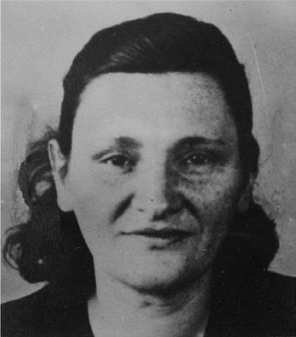
Malvina Gruber, née Hofstadterova was a Jewish Comintern agent, who was part of a Soviet intelligence network in Belgium and France, that was later called the Red Orchestra by the Abwehr, during Nazi regime. Gruber worked as a cutout, but her specialism was couriering people across borders. From 1938 to 1942, Gruber worked as assistant to Soviet agent Abraham Rajchmann, a forger, who provided identity papers, e.g. the Kennkarte, Carte d'identité and travel permits, for the espionage group. At the beginning of 1942, she was arrested in Brussels by the Abwehr.

Abraham Rajchmann was a Jewish Polish career criminal and revolutionary militant, expert forger and engraver who worked for Soviet intelligence from 1934. Through his contact with Comintern official Léon Grossvogel, he was recruited into a Soviet espionage group initially in Belgium that was being run by Leopold Trepper, that would later be called the Red Orchestra by the Abwehr, during the Nazi period. Rajchmann used a number of aliases to disguise his identity, including Adam Blanssi, Arthur Roussel, Katenmann, Fabrikant and Max.
Isidore Springer was Belgian diamond dealer and communist who became an important member of the Red Orchestra organisation in Belgium and later France during World War II. Springer worked as a recruiter and courier between Leopold Trepper, a Soviet agent who was the technical director of Soviet espionage in Western Europe, and Anatoly Gurevich, also a Soviet agent, in Belgium. He would later run the 6th network of Trepper's seven espionage networks in France, providing intelligence from US and Belgian diplomats. His aliases were Romeo, Verlaine, Walter van Vliet, Fred and Sabor.
Germaine Schneider was a Belgian communist and Communist International (Comintern) agent. During the latter half of the 1920s, Schneider worked predominantly for the Communist Party of Belgium. During the interwar period and early World War II, Schneider was a core member of a Soviet espionage group. She worked as a principal courier for the groups that were associated with the Comintern agent, Henry Robinson in the late 1930s in France and later the Soviet GRU officer, Konstantin Jeffremov in Belgium and the Low Countries, in the early 1940s. These groups were later identified by the Abwehr under the moniker the Red Orchestra. Schneider used the aliases Clais, Pauline, Odette, Papillon and Butterfly (Schmetterling) to disguise her identity.

Hendrika Geertruida (Riek) Milikowski-de Raat was a Dutch communist, resistance fighter and painter who specialised in realism and symbolism with a focus on figures. De Raat's work is exhibited at the Stedelijk Museum in Amsterdam and Museum De Lakenhal in Leiden as well as internationally.

Medardo Griotto was an Italian militant communist activist and member of the Italian Communist Party. Trained as a engraver, Griotto became an expert forger, who became an important member in the espionage network run by Communist International (Comintern) intelligence agent Henry Robinson. Griotto was betrayed by Leopold Trepper, arrested and executed by guillotine at Plötzensee Prison.


